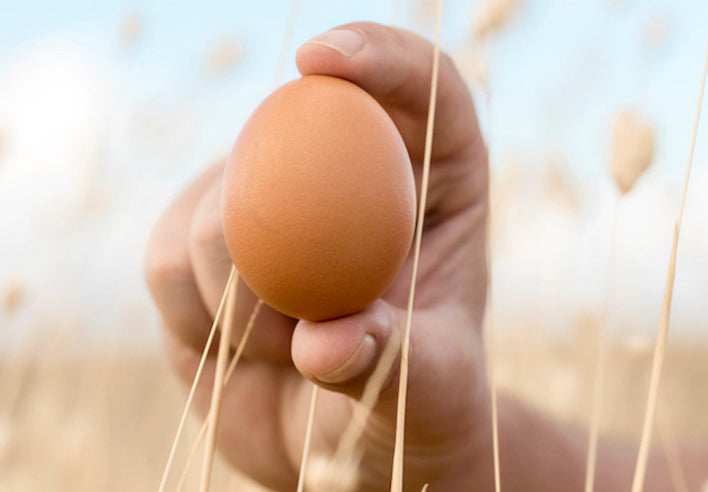Curcumin and Turmeric: Basics, Benefits, and Bioavailability
If health and nutrition are important to you, you’re probably familiar with natural elements called “super-ingredients.” That’s because they’re revolutionizing the way we think about nutritional supplements. Like superfoods, super-ingredients are packed with natural substances that support our health—including vitamins, antioxidants, and other compounds.
One of the super-ingredients leading the charge is curcumin, a compound derived from the turmeric plant. Let’s take a closer look at this super-ingredient and discover how it can positively impact your health.
What Is Curcumin?

Curcumin is part of a family of substances called “curcuminoids” found naturally in turmeric, an aromatic plant in the ginger family. Native to South Asia, turmeric has been used for centuries both medicinally and as a seasoning in India. The plant’s striking yellow rhizomes take their color from curcumin.
In India, curcumin is called a “bioprotectant,” and is valued for its health-promoting properties. Turmeric is now cultivated in Southeast Asia and the Pacific Islands, increasing the availability of curcumin worldwide.
Anti-Inflammatory Properties
Inflammation can occur anywhere in the body, and its effects can sap your body’s strength and endurance. Curcumin has been widely studied for its anti-inflammatory properties.
A 2017 study by Hewlings and Kalman published in the journal Foods concluded that, “curcumin can help in the management of oxidative and inflammatory conditions… and may also help in the management of exercise-induced inflammation and muscle soreness…” [1]
Systemic inflammation can pose significant health risks. Chronic, low-level inflammation has been linked to increased risk for cardiovascular disease, type 2 diabetes, and certain types of cancers.
A study by Peng and coworkers, published in 2021 in the journal Drug Design & Therapy, examined curcumin’s effects in a variety of inflammatory diseases such as arthritis, irritable bowel syndrome, and psoriasis. The investigators concluded that, “curcumin has good anti-inflammatory properties, and curcumin regulates NF-κB, MAPK, AP-1, JAK/STAT and other signaling pathways, and inhibits the production of inflammatory mediators.” [2]
These and other clinical studies favor the use of curcumin as a safe and healthy supplement to support an active lifestyle.
Pain Management
Pain and inflammation often go hand-in-hand. Inflammation in the joints, for example, can lead to pain and swelling, and if untreated, could limit mobility. Successful control of chronic pain has long been a goal for scientists, who have increasingly turned their attention to the pain management properties of natural substances like curcumin.
A 2019 study by Shep and colleagues published in the journal Trials compared curcumin and diclofenac treatment in patients with osteoarthritis (OA) of the knee. Because many OA patients struggle with the side-effects of nonsteroidal anti-inflammatory drugs (NSAIDs), the investigators sought to explore curcumin as a natural alternative. They found that, “Curcumin has similar efficacy to diclofenac but demonstrated better tolerance among patients with knee OA.” [3]
A 2018 review by Sun and coworkers in Phytomedicine examined the effects of Curcura longa (curcumin’s source) in patients with chronic pain caused by peripheral nerve injury or inflammation. The investigators reviewed articles published between 1976 and 2018 and concluded that, “Although the mechanisms of pain mitigating effects are not very clear, there is compelling evidence proving that curcumin plays an essential role.” [4]
Antioxidant Properties
The disruptive and damaging role of free radicals in pathologic processes is now widely understood in the health community. Free radicals are a species of highly reactive molecules with a characteristic of an unpaired electron in their outer orbit. This electron is hungry to bond with other atoms and can disrupt healthy biological processes. Free radicals can damage vital cells, leading to an inflammatory response and subsequent pain.
Antioxidants like curcumin are often called “free radical scavengers” because they are able to find and neutralize free radicals wherever they occur in the body. Curcumin is able to inhibit production of three enzymes that are essential mediators of inflammation: cyclooxygenase-2 (COX-2), lipoxygenase (LOX), and inducible nitric oxide synthase (iNOS).
Not all Curcumin is Created Equal

Looking to add curcumin to your health regimen, but not sure you are taking the right kind? While it may be tempting to order the first supplement you see, there’s an important quality about curcumin you should know, and it is called bioavailability.
All curcumin supplements are not the same. A vast number of them on the market are not “body-ready.” Remember that curcumin alone is not easily absorbed, and many brands have not addressed the critical issue of curcumin’s low bioavailability, effectively rendering them ineffective.
Curcumin C3 Reduct®, for example, the type found in Redd Remedies' Curcumin C3 Reduct Chewable, delivers biologically active metabolites that are easily absorbed, clearing the bioavailability hurdle and boosting curcumin’s ability to target problem areas such as inflamed joints. And our Curcumin T4 formula incorporates other herbs that, based on Ayurvedic and Traditional Chinese botanicals, works holistically with your body’s needs to promote a sense of balance between body and mind.
Redd Remedies offers only the highest quality curcumin supplements available that include bioavailable metabolites to ensure you receive the full measure of curcumin’s benefits.
Take the next step to a more mobile, pain-free life by incorporating bioavailable curcumin into your daily routine.
[1] https://www.ncbi.nlm.nih.gov/pmc/articles/PMC5664031/
[2] https://www.ncbi.nlm.nih.gov/pmc/articles/PMC8572027/
[3] https://trialsjournal.biomedcentral.com/articles/10.1186/s13063-019-3327-2
Related Posts


